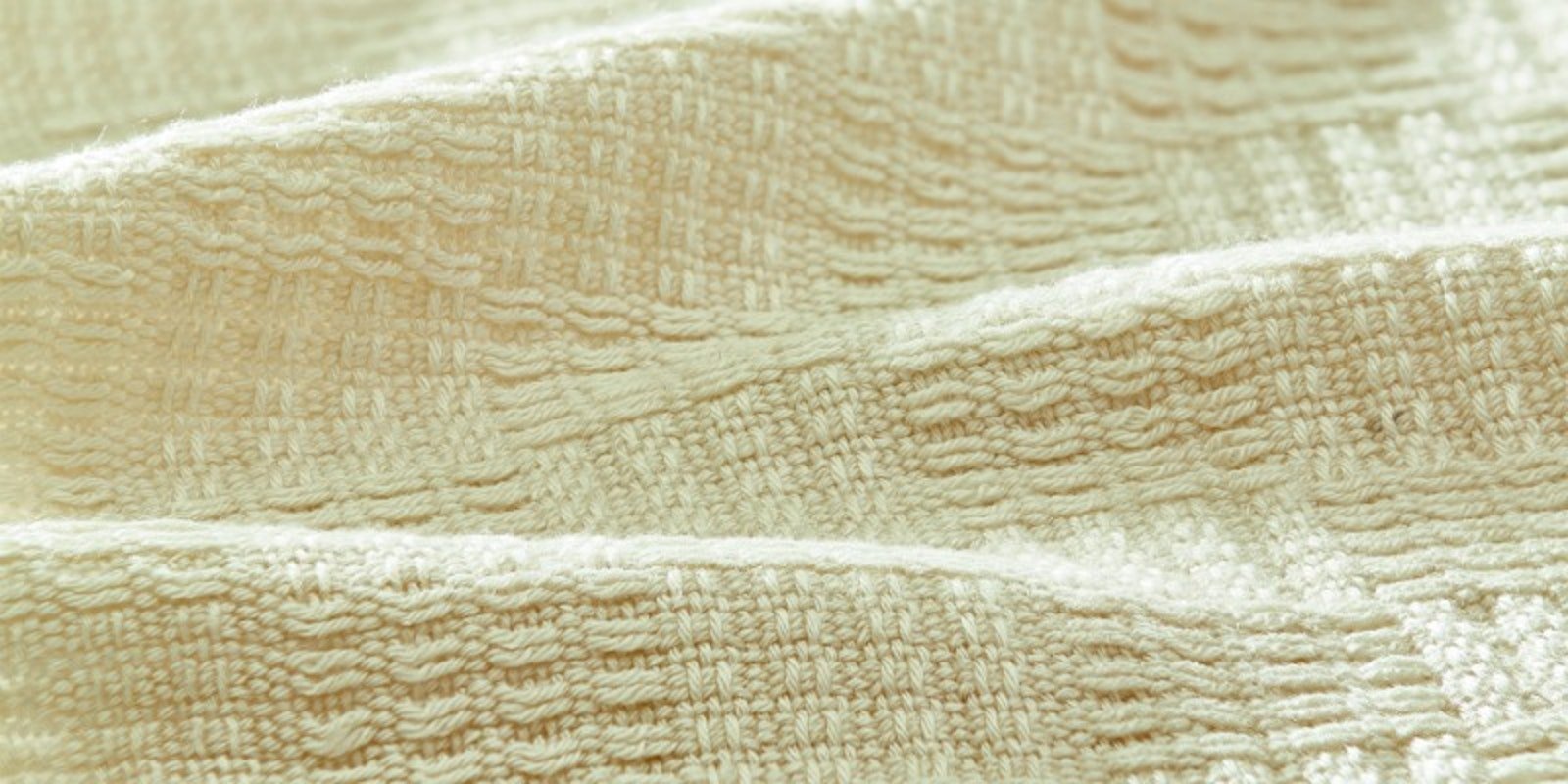
David Wismar's "Snakeskin Scarf" takes a walk on the wild side.
I love the expression "Weaver's Handshake." To me, it describes perfectly the impulse many weavers have to reach out and touch the scarf or handwoven clothing of another weaver upon meeting. It's about the feel of the fiber and the weave structure. It's a simple way of saying, "I like that. Good job. Nice texture."
On the same topic, a yarn store owner once expressed to me how often customers came into her store just to "pet" the yarn, some of them explaining somewhat sheepishly that it was their sole purpose for being there. Most weavers would be hard pressed to enter a yarn store and not be able to touch the yarns, to feel their texture and find out if they are soft, slippery, fuzzy, or crisp. It’s the up-close and personal touch that we crave.
The May/June 2015 issue of Handwoven is all about texture--texture you can touch with your hands and texture you can see with your eyes. Texture on a printed page is a challenge; pictures need to be close up to capture it, and the issue meets the challenge with many close-ups.
Textured Weaves Imitate Nature
The cover grabs you with David Wismar's snakeskin patterned scarf. I'm not a fan of snakes, nor, by extension, their skins, but this is one I wouldn't mind touching. The close-ups within the magazine show how David was able to mimic the look of snakeskins, using color with a twill pattern. I am drawn in particular to the photo of a similar scarf David wove in a different colorway to mimic the skin of a friend's Tegu lizard. It may cause me to revise my feelings about reptile skins, although I am holding firm on snakes.
Texture Through Structure, Color, and Embellishment

Deborah Heyman has enhanced the honeycomb texture of these pillows by outlining each cell with a slightly darker color of yarn.
A completely different and elegant take on the topic of textured weaves are the pillows woven in honeycomb by Deborah Heyman. Deborah is a friend of mine, so I have seen these up close. I can tell you they are just as beautiful in person as they are on the pages of the magazine.
Deborah is a meticulous weaver, and it shows in all of her work. Each bead is placed by hand and the end result is magic. To enhance the natural shadows and texture created by the yarn sizes, beads, and honeycomb structure, Deborah outlines each cell with a slightly darker yarn color--a detail that is subtle but effective.
These are pillows that intrigue you from a distance and then completely wow you as you get up close.
Utility of Textured Weaves

A close-up shot of the "Waffle-Weave Towels," as seen on page 53 of *Handwoven* May/June 2015.
For years I avoided color-and-weave without finding out what it was because all of the books were in black and white. In a similar way, without actually reading about the process, I've been avoiding waffle weave on the rigid-heddle loom, assuming it would require tedious and repetitious pick-up steps. To my surprise, Jodi Ybarra's waffle-weave towels require picking up warp threads only one time at the beginning. Once the pick-up stick is placed behind the heddle, it is used over and over without being removed throughout the body of the towels. This is useful texture. Waffle weave makes towels more "thirsty" than they would be in plain weave. It is also an interesting and simple textured weave as shown in the close-up.
Check out this issue of Handwoven. It's full of texture-focused projects, interesting articles, and a couple of projects to do with kids. Most of all, check out the close-ups for texture you can see.
—Susan

